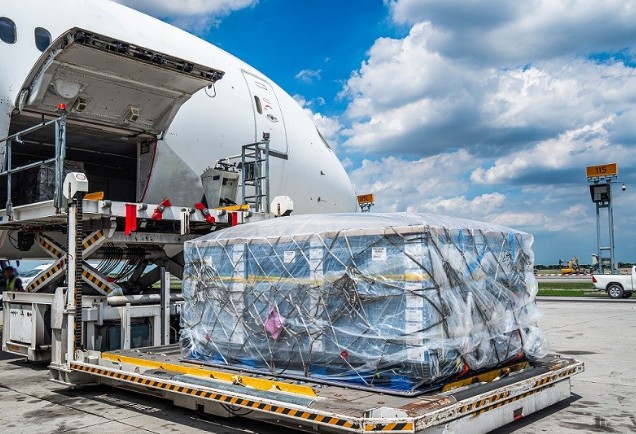Introduction: A Season of Strain and Strategic Reckoning
As the 2025 holiday season unfolds, the global air cargo sector is facing a convergence of crises that few anticipated and even fewer were prepared to absorb. What began as a tragic aircraft accident in Kentucky has cascaded into a full-blown capacity crunch, exacerbated by widespread flight cancellations, regulatory constraints, and aggressive cost inflation. For retailers, logistics teams, and consumers alike, the ripple effects are already manifesting in higher shipping costs, delayed deliveries, and strained fulfillment networks. But beneath the surface lies a deeper story one of structural fragility, regulatory exposure, and the urgent need for adaptive strategy.
This article offers a comprehensive analysis of the events that triggered the current disruption, the forensic cost breakdown facing shippers, and the strategic implications for businesses navigating the most volatile peak season in recent memory.
The Kentucky Crash: Catalyst for a Capacity Collapse
On October 30, 2025, a UPS MD-11 cargo aircraft crashed shortly after takeoff from Louisville Muhammad Ali International Airport, killing 14 people and igniting a fireball that destroyed nearby businesses. The incident, traced to a catastrophic detachment of the aircraft’s left engine, prompted immediate federal investigation and triggered a wave of emergency responses across the air cargo industry.
Within 48 hours, both UPS and FedEx voluntarily grounded their MD-11 fleets long-haul workhorses responsible for transcontinental and international freight movement. The FAA followed with an emergency directive citing “loss of continued safe flight and landing” risk, while Boeing initiated a full engineering review of the MD-11’s pylon and engine mount systems.
The impact was swift and severe:
- UPS lost approximately 9% of its total fleet capacity, with MD-11s serving critical overnight and long-haul lanes.
- FedEx grounded 4% of its fleet, disrupting international express services and high-volume retail lanes.
- Western Global Airlines, a key third-party carrier, saw 16 MD-11s affected, with 12 already in storage prior to the crash.
The grounding of these aircraft removed over 50 planes from active service at the height of the holiday shipping season, triggering a domino effect across logistics networks and forcing carriers to reroute freight, prioritize critical shipments, and lean heavily on ground transport alternatives.
Flight Cancellations and Belly Cargo Loss: A Secondary Shock
While the MD-11 grounding captured headlines, a quieter but equally disruptive trend has been unfolding across commercial aviation. Airlines have slashed routes due to fuel cost volatility, staffing shortages, and regulatory constraints most notably the FAA’s mandated 10% reduction in domestic flight capacity at 40 major U.S. airports.
Passenger aircraft play a vital role in air cargo, especially for domestic and short-haul international shipments. Their belly holds often carry freight ranging from medical supplies to consumer electronics. Each canceled flight removes valuable cargo space from the network, disproportionately affecting time-sensitive shipments and regional fulfillment strategies.
The result is a two-tiered capacity collapse: one driven by grounded cargo aircraft, the other by commercial flight reductions. Together, they have created a freight bottleneck that is reshaping how goods move across North America and beyond.
Freight Rate Surge: A Forensic Cost Breakdown
The squeeze on capacity has triggered a sharp and measurable rise in air freight costs. Both FedEx and UPS have implemented aggressive peak season surcharges, dimensional weight changes, and fuel escalations that are compounding the financial strain on shippers.
FedEx 2025 Surcharges
- Residential and home delivery surcharges have increased by 25.8% year-over-year, reflecting both fuel costs and capacity constraints.
- Oversize commercial shipment fees now range from $240 to $305 per package, up 18.5% from 2024.
- Unauthorized package surcharge has jumped 34%, from $1,325 to $1,775 per item, targeting non-compliant freight dimensions.
UPS 2025 Surcharges
- Ground Saver and international service fees have surged during Demand Period 2 (Nov 23–Dec 27), with double-digit increases across most zones.
- Zone reclassifications and accessorial fees are adding hidden costs, especially for SMEs operating across multiple regions.
Dimensional Weight Rule Change
- Effective August 18, both carriers now round all package dimensions up to the nearest inch, inflating billable weight and penalizing inefficient packaging. A package measuring 12.2” x 10.3” x 6.4” now rounds to 13” x 11” x 7”, increasing the DIM weight and cost by 10–15% on average.
Fuel Surcharge Escalations
- Fuel surcharges have climbed steadily since February, adding 3–6% to total shipping costs depending on zone and service level.
Taken together, these changes represent a 35% increase in total shipping costs since 2020, with 2025 marking the steepest year-over-year jump. For SMEs and large retailers alike, the financial impact is no longer marginal it’s strategic.
Retail Fallout and Strategic Adjustments
Retailers are already recalibrating their logistics strategies in response to the disruption. Major players like Amazon, Walmart, and Target are rerouting shipments to ground transport, adjusting fulfillment timelines, and warning customers of potential delays. But for SMEs, the challenge is more acute. With fewer options to absorb cost increases or secure priority space, many are facing difficult decisions about inventory levels, customer communication, and margin preservation.
Emerging strategies include:
- Early ordering and fulfillment to avoid mid-December bottlenecks and secure limited air cargo space.
- Packaging optimization to reduce dimensional weight penalties and improve cost efficiency.
- Carrier renegotiation and multi-modal logistics planning, including increased use of regional carriers and ground networks.
- Transparent communication with customers, including revised delivery timelines and proactive messaging about potential delays.
These adjustments are not just tactical they are existential. In a freight environment defined by scarcity and volatility, agility is the new currency.
Looking Ahead: Q1 2026 and Beyond
The air cargo crunch is unlikely to ease before January. With MD-11 inspections ongoing and commercial flight schedules still constrained, capacity will remain tight well into Q1 2026. Analysts expect continued rate volatility, delayed returns for grounded aircraft, and increased reliance on ground transport and regional carriers.
Key trends to watch:
- Carrier prioritization of critical shipments, including pharmaceuticals, medical devices, and government contracts.
- Expansion of regional fulfillment centers to reduce reliance on long-haul air lanes.
- Acceleration of automation and AI tools to optimize packaging, routing, and cost modeling.
- Pressure on last-mile networks, especially in urban and underserved areas.
For businesses, the challenge is not just surviving peak season it’s building resilience for the quarters ahead. That means investing in flexible infrastructure, diversifying carrier relationships, and embedding forensic cost analysis into every logistics decision.
Conclusion: Navigating the Turbulence with Strategic Clarity
The 2025 holiday season is more than a logistics challenge it’s a strategic reckoning. The convergence of tragedy, regulation, and economic pressure has exposed vulnerabilities in the air cargo system that will take months, if not years, to resolve. But it also offers a moment of clarity: the need for flexible, multi-modal strategies, smarter packaging, and proactive communication has never been greater.
For SMEs, the path forward lies in actionable intelligence, audit-ready documentation, and sector-specific adaptation. For major retailers, it’s about leveraging scale without sacrificing agility. And for the industry at large, it’s a call to reimagine resilience not as a buzzword, but as a measurable, operational imperative.
As we look toward 2026, the winners will be those who adapt not just to the crisis at hand, but to the new realities of global freight.
Peacock Tariff Consulting is uniquely positioned to help businesses navigate the current air cargo crisis and broader supply chain volatility with precision, foresight, and audit-ready deliverables.
Here’s how:
Strategic Support from Peacock Tariff Consulting
1. Forensic Cost Modeling and Surcharge Analysis
Peacock Tariff Consulting can break down the complex surcharge structures from FedEx, UPS, and other carriers dimensional weight changes, peak season fees, fuel escalations and translate them into actionable cost models.
- Custom CSV exports showing lane-by-lane surcharge impacts
- Audit-ready documentation for internal finance and procurement teams
- Forecasting tools to model Q1 2026 cost exposure based on current trends
2. Packaging Optimization and DIM Weight Strategy
With dimensional weight rules now rounding up every inch, packaging inefficiencies are costing SMEs thousands. Peacock Tariff Consulting offers:
- Sector-specific packaging audits to reduce billable weight
- Workflow integration with fulfillment teams to redesign carton specs
- Benchmarking tools to compare DIM penalties across carriers
3. Carrier Negotiation and Multi-Modal Planning
In a constrained freight environment, diversification is key. Peacock Tariff Consulting helps clients:
- Evaluate alternative carriers and regional networks
- Negotiate surcharge relief or volume-based discounts
- Design multi-modal strategies that blend air, ground, and LTL freight
4. Regulatory Monitoring and Risk Advisories
With FAA directives, aircraft groundings, and evolving safety protocols, regulatory risk is now a logistics variable. Peacock Tariff Consulting provides:
- Real-time advisories on FAA, DOT, and carrier compliance updates
- Impact assessments for grounded aircraft and route cancellations
- Stakeholder memos tailored for executive and operational audiences
5. Retail and SME Resilience Planning
For retailers and SMEs facing margin pressure and fulfillment risk, Peacock Tariff Consulting delivers:
- Holiday readiness playbooks with cost, timing, and risk mitigation strategies
- SKU-level tariff and freight integration for product-level profitability analysis
- Consumer impact modeling to forecast delivery delays and cost pass-through
Looking Ahead: Building Resilience into 2026
Peacock Tariff Consulting doesn’t just react to crises it builds frameworks for resilience. Whether you’re a retailer bracing for Q1 volatility, an SME recalibrating fulfillment costs, or a logistics team seeking clarity amid chaos, Peacock Tariff Consulting offers the tools, insights, and deliverables to move forward with confidence.
#AirCargoCrisis #HolidayShipping2025 #SupplyChainDisruption #FedExUPSGrounding #FreightCostSurge #LogisticsStrategy #DimWeightImpact #RetailResilience #TariffEdgeInsights #PeacockTariffConsulting

